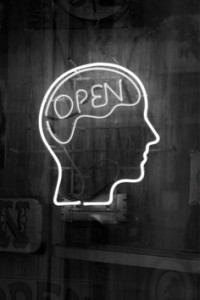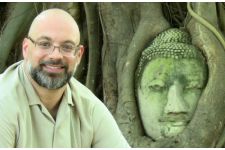 My journey to Neurosculpting® has been long, winding, contained many detours and more dead-ends than I care to remember. I started my working life as a filmmaker and video producer, (and somehow wound up as a software developer) but had always been fascinated by neuroscience and psychology – essentially anything brain related. For years I was content to consume brain information as snack food for my own brain, but never connected with the big picture of what this information was all pointing towards.
My journey to Neurosculpting® has been long, winding, contained many detours and more dead-ends than I care to remember. I started my working life as a filmmaker and video producer, (and somehow wound up as a software developer) but had always been fascinated by neuroscience and psychology – essentially anything brain related. For years I was content to consume brain information as snack food for my own brain, but never connected with the big picture of what this information was all pointing towards.
In 1993 a friend introduced me to the writings of Michael Harner and the practice of Shamanic Drum Journeying. My initial interest in the journeying was as grist for a potential screenplay character, but the journeys proved so powerful and revelatory that they shook my foundations. I became aware for the first time of the deep, quiet world of the subconscious.
Having heard much about the peace that meditation can bring, I attempted “sitting” or “empty space” meditations. I failed consistently to find and maintain my empty space, and let off meditation feeling quite disappointed in myself and the process.
Through the next twenty years I watched as my sister completely rewrote her entire life, making huge changes and tackling what seemed to be gigantic obstacles, all while maintaining a sense of humor and an air of grace and dignity. As major threads of my own life began to unravel, I questioned her intensely on what kept her going. Back then Neurosculpting® was just a concept, still in the process of coalescing and being put to the test. But she trained me in one or two of the tools that would become foundational elements of the Neurosculpting® system
In time the individual tools came to called Neurosculpting® – a system that has been used to treat trauma and PTSD in first responders around the country. At this point I decided to revisit the tools I had already learned and was shocked to see just how they had come together to form a robust, mature, and practical meditation system.
As a filmmaker I was thrilled to see that Neurosculpting® uses guided imagery – the brain’s 
But the most important aspect of this system for me is that it works. I use these tools in my daily life, and jumped at the offer to become certified and teach these tools to others in class settings, or as individuals. Watching a person’s eyes light up in an A-HA moment is a wonderful feeling.

moc.sbaLlortnoCdniMobfsctd-465b35@gnitplucsorueN
Learn from Kurt!
Join him in person at one of these upcoming events.
April 10th Neurosculpting to Navigate Change
April 27th Neurosculpting through Duality

